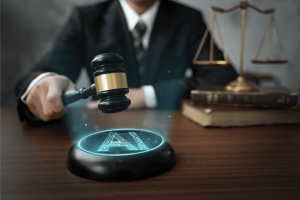The subject of the use of Artificial Intelligence in medicine, engineering and other professions has become heightened and very contentious. AI, as many people know, has the ability to very quickly aggregate and analyze data (information), and to provide contextual and reasoned answers to questions posed to these computer platforms. The use of AI might be attractive to some lawyers that might use AI to analyze cases, find cases, or to write letters or motions that are submitted to the court.

However, it must be said that Family Law, in particular, is a very specialized and important area of the law, that requires far more than data analysis, or manufactured pleadings. In my view, every client and every family and child has to be assessed and represented as a unique and very individual case. Every situation involving the circumstances of a family, the behaviors of a parent, or the special needs of a child requires not a “data-drive” approach, but a nuanced and careful approach that focuses on an individual and experienced assessment of that client’s goals and needed outcomes.
The Illinois Supreme Court recently published some guidelines on the use of AI by attorneys. echoing the earlier guidelines promoted by the ABA. These comments are what is likely to be the first thoughts on how we as practitioners utilize AI in the management of our cases. From my perspective, AI might be a helpful tool for engineers to fabricate a stronger sheet of metal, but AI truly must be utilized with caution by lawyers managing family law cases that require careful individual assessment and the needed influence of an experienced family lawyer.
Tech lawyer Nicole Black comments: “Fortunately, the tide seems to be turning with the issuance of a new, progressive court AI policy by the Illinois Supreme Court. The policy went into effect on January 1st and provides a judicious approach to the incorporation of GAI tools into the workflows of legal professionals, including court personnel.
In the policy, the court wisely acknowledges the inevitability and unprecedented speed of AI adoption, along with the benefits and challenges it presents: “The integration of AI with the courts is increasingly pervasive, offering potential efficiencies and improved access to justice. However, it also raises critical concerns about authenticity, accuracy, bias, and the integrity of court filings, proceedings, evidence, and decisions. Understanding the capabilities and limitations of AI technology is essential for the Illinois Judicial Branch.”
Importantly, the court advises that judges take an open-minded approach to AI and its “use of AI by litigants, attorneys, judges, judicial clerks, research attorneys” and should not require disclosure when implemented: “The use of AI … should not be discouraged, and is authorized provided it complies with legal and ethical standards. Disclosure of AI use should not be required in a pleading.”
Finally, judges were reminded that they “remain ultimately responsible for their decisions, irrespective of technological advancements.” To assist in their efforts to stay apprised of technological advancements, the court provided additional resources for judges, including a judicial reference sheet on AI.
The Illinois Supreme Court’s new AI policy offers a thoughtful, balanced approach to AI adoption in our profession. The court wisely rejects outright bans and unnecessary disclosure mandates, while acknowledging the inevitability of AI adoption.
By highlighting AI’s potential benefits while addressing risks like accuracy, bias, and ethical compliance, it successfully establishes a framework that ensures the ethical and practical adoption of AI without compromising the justice system’s integrity. In doing so, it sets an example for other courts to follow by providing a flexible, forward-thinking roadmap for responsible AI usage in the legal profession.”
Above quoted text credit to: Nicole Black, a Rochester, New York technology writer and attorney.
 Illinois Divorce Lawyer Blog
Illinois Divorce Lawyer Blog

